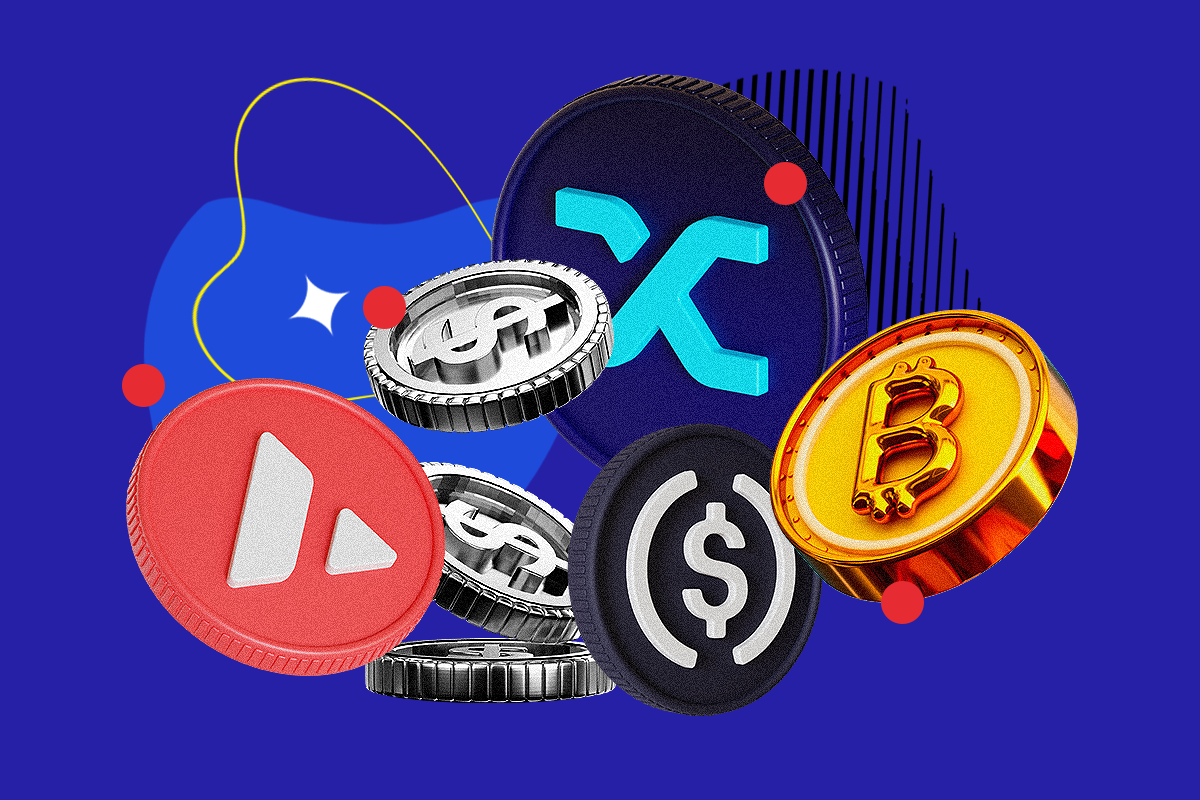Rise of the Synths: Why Traders Are Choosing Synthetic Assets
If imitation is the sincerest form of flattery, then cryptos and stocks were blushing when synthetic assets rolled up.

Trading has always been a couples activity where a seller and a buyer agree on a price. Decentralized finance (DeFi) changed this with the introduction of decentralized exchanges (DEX) because sellers and buyers were replaced with swappers and liquidity providers. Trading on exchanges feels frictionless, but things like trading fees, slippage, and price spread bite us in the ass.
Being overcollateralized allows synthetic cryptos to stay stable even during volatile markets when prices drop significantly.
While speculative trading can be rewarding at times, the process of exchanging assets could be smoother. That’s why crypto traders are making their biggest bets using synthetic crypto assets. But are synthetic assets as good as real assets? The answer isn’t so simple, so here are the major benefits of using synthetic assets and you can decide for yourself.
What are synthetic assets?
Synthetic assets are simulated representations of real-world assets on the blockchain. A synthetic asset is like a crypto derivative that tracks the price performance of an external asset without being backed by the actual asset. Rather, synthetic crypto assets imitate the attributes of one asset while being overcollateralized by another asset.
Synthetic cryptos can simulate all asset classes such as cryptos, commodities, stocks, ETFs, and other financial instruments. They can even be used as devices to enter short or long positions on stocks, crypto, or other assets. Synthetic asset exchanges allow for liquidity between assets that couldn’t otherwise be directly traded.
Benefits of synthetic assets
There are numerous reasons why a DeFi trader would prefer synthetic assets over their real counterparts.
Speculation
One motivation a trader may have for using synthetic assets is speculation. Many traders swap cryptos hoping that one appreciates and can be sold for a profit down the line, but asset exchanges always have price spreads and charge trading fees at the trader’s expense. Synthetic asset exchanges offer more liquidity than regular asset exchanges without the same underlying costs for traders. This is because of the unique way value moves between synthetic assets.
No counterparty
When a synthetic asset is minted, a higher value of crypto must be locked to serve as collateral. But, when synthetic assets are traded against each other, the ‘sold’ asset is burned and an equal value of the ‘buy’ asset is subsequently minted. This means that synthetic assets aren’t actually exchanged because one can be removed from circulation to free up its value and create another of equal value. By eliminating the need for a counterparty to make trades, order books—where sellers and buyers of an asset meet at a certain price—become unnecessary for synthetic assets.
Decentralized
If all synthetic assets are collateralized in the same way, then a synthetic exchange can mint a virtually unlimited supply of any asset within the confines of its collateral. In other words, a synthetic asset protocol can mint as many tokens as it wants as long as its total value is sufficiently backed. Synthetic asset exchanges are non-custodial DeFi protocols, so there are no brokers or KYC systems and very few fees. This makes swapping synthetic assets the most decentralized and cost-effective way to trade.
Overcollateralized
One downside of synthetic assets is that using collateral to mint them may be an inefficient use of capital. Synthetic assets must be sufficiently backed at all times to stay securely pegged to their target value. This means the value of the collateral must be multiple times that of the synthetic assets to maintain a buffer for price volatility. Being overcollateralized allows synthetic cryptos to stay stable even during volatile markets when prices drop significantly.
Kinds of synthetic assets
Synthetic assets can be used for a wide range of purposes, but a very popular asset class to imitate is fiat currencies. Stablecoins pegged to the US dollar like USDC or USDT are backed by actual money and are controlled by centralized entities. Synthetic stablecoins are just as secure as Tether USD and other fiat-backed stablecoins but are more decentralized and accessible through an overcollateralized minting mechanism.
Stablecoins
The most popular decentralized stablecoin is DAI and it’s minted using a synthetic minting mechanism called Maker Protocol. Just like any synthetic asset, a crypto deposit greater than the value being minted is required as collateral for DAI. DAI must always be overcollateralized by at least 130% of its own value in other cryptocurrencies like ETH. Any collateral that falls below 130% gets liquidated and sold to maintain DAI’s peg to the dollar. Maker Protocol’s super effective algorithmic stablecoin mechanism has built high confidence in DAI.
Cryptocurrencies
Another rapidly growing synthetic stablecoin is sUSD. sUSD is different compared to other stablecoins because it’s one of many synthetic crypto assets in the Synthetix ecosystem. Synthetix is a synthetic asset platform that enables anyone to mint derivative versions of major cryptos like Avalanche and Bitcoin without actually having to hold them. Synthetic assets on Synthetix are called ‘synths’ and can emulate a range of asset classes.
Synthetix users can mint synthetic versions of fiat currencies, cryptos, and even crypto indices by posting the native SNX token as collateral. There is a maximum 0.7% fee for minting synths on Synthetix and the protocol-wide collateralization ratio is above 300%. This means you’ll need enough SNX to cover at least three times the value of the asset you want to mint, so if the price of SNX drops too low then your collateral will get liquidated.
Despite how relying on the economic sustainability of SNX makes holding synths a bit riskier, there are several reasons why someone would use Synthetix. First, Synthetix enables traders to enter long and short positions on crypto assets that aren’t possible on other DeFi platforms. For example, iSynths are inverse synthetic assets that experience opposite price movements to the asset their simulating. Synthetix allows its users to easily access leverage and other instruments without risking the underlying asset.
Stocks
While it’s possible to synthesize stocks and ETFs on the blockchain, there are a few issues regarding the tokenization of securities. Synthetix has a DeFi index, but fiat currencies are the only traditional assets featured in the protocol. One platform that tried turning stocks into synthetic cryptos was the Mirror Protocol, but it was deployed on the Terra blockchain which collapsed and took Mirror down along with it. Mirror relies on the defunct UST stablecoin, so those who invested in their synthetic crypto stocks have been left with virtually nothing.
Stock markets are highly regulated, and tokenized securities haven’t made much progress in that arena. Securities require high oversight that isn’t possible for decentralized protocols on the blockchain, so it’s unlikely for stocks to make it as synthetic crypto tokens any time soon. Although some private and public companies issued their IPOs as tokenized securities, this is a far cry from synthetic stocks existing alongside their traditional counterparts.
How to Buy sUSD
Synthetix is currently the best marketplace for trading synthetic assets because of how few places offer them, so your best bet for getting synthetic stablecoins is from a DEX. The only exception is the DAI stablecoin since you can get it on Kraken, Coinbase, Gemini, and most exchanges.
sUSD isn’t available on many exchanges, so your best bet is to buy ETH from an exchange like Crypto.com. From there, you can to transfer your ETH to a DeFi wallet and trade it for sUSD on a DEX like Uniswap.
